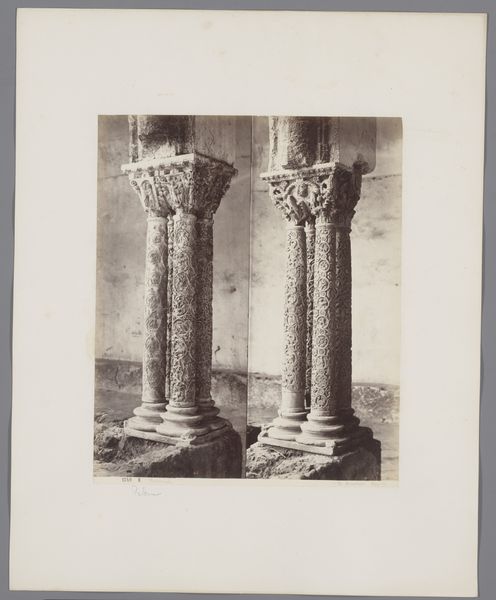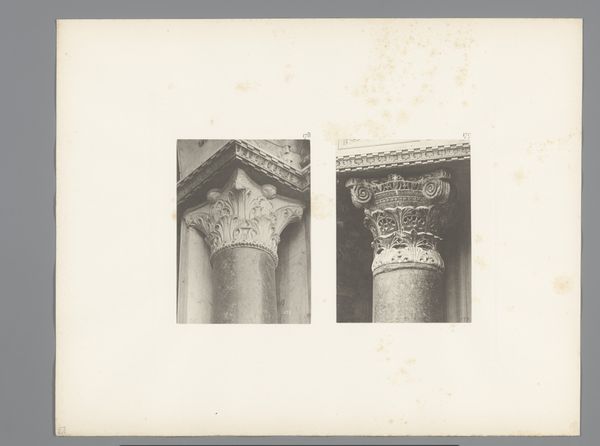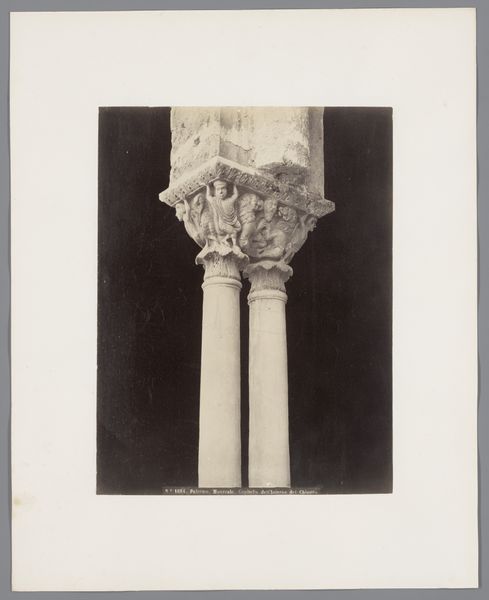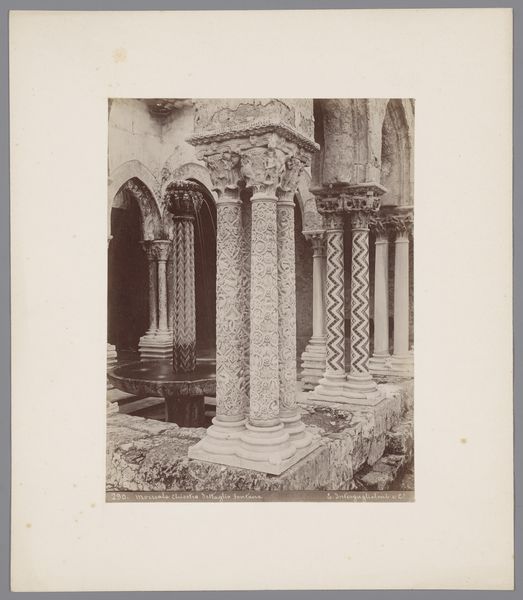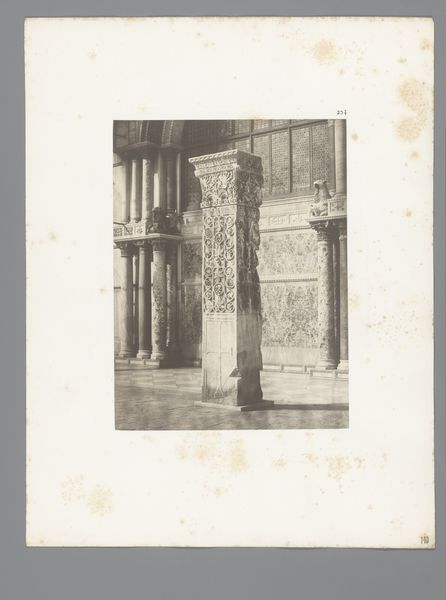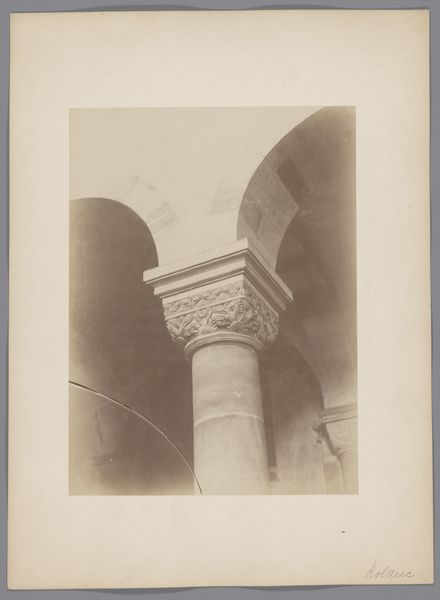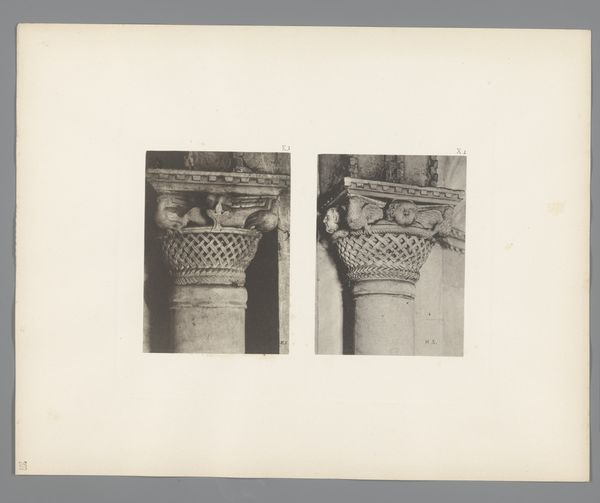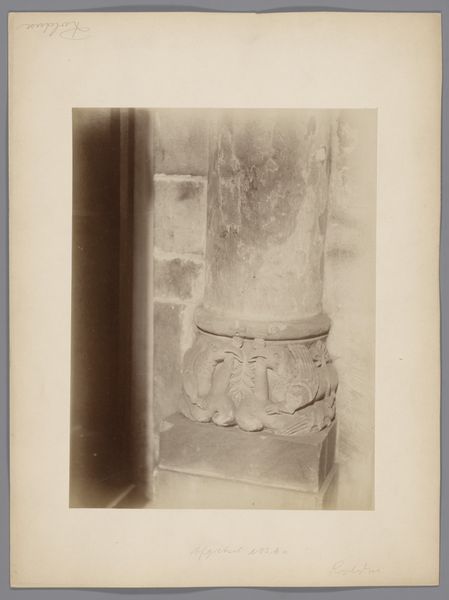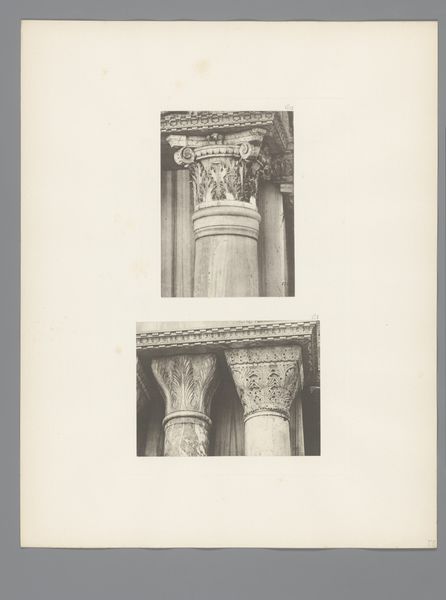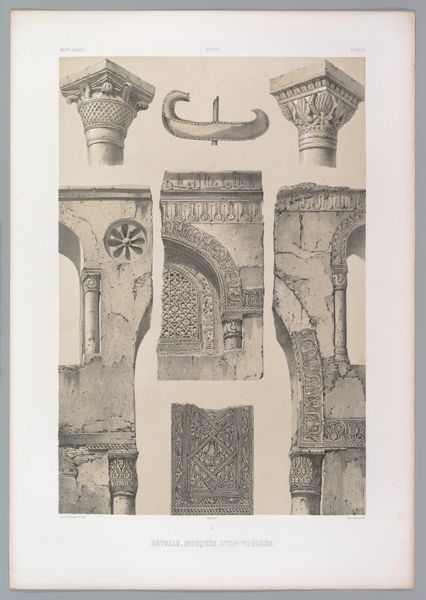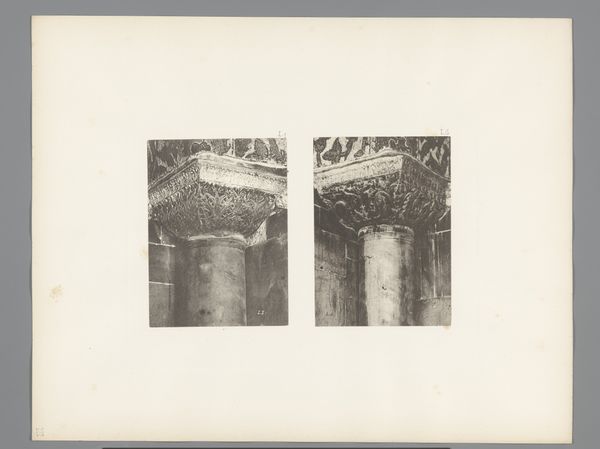
photography, gelatin-silver-print, architecture
#
landscape
#
photography
#
geometric
#
ancient-mediterranean
#
gelatin-silver-print
#
islamic-art
#
architecture
Dimensions: height 252 mm, width 190 mm, height 384 mm, width 309 mm
Copyright: Rijks Museum: Open Domain
Editor: So this is a photograph by Roberto Rive, titled "Kapiteel in het klooster van Monreale," placing it somewhere between 1860 and 1889. It's a gelatin-silver print showing the capital of a column. I'm struck by the level of detail captured in the carvings. What can you tell me about it? Curator: Well, focusing on the materiality, the use of gelatin-silver allows for a remarkable precision. Rive isn’t just recording an architectural detail; he's documenting a site of labor and cultural exchange. Consider the capital itself - those carvings aren't merely decorative. How do they reflect the means by which such structures were constructed and, in turn, the social relations that governed those production methods? Editor: That’s interesting. I hadn’t considered the labour aspect. Are you saying the style reflects specific social classes or production techniques? Curator: Precisely. Look at the photograph’s texture, its aging and silvering. That reveals its history of consumption and exchange. Think about where Rive was likely selling these prints - who were the consumers of such images? They would’ve largely been the wealthy Europeans who saw in these depictions a certain timeless and classical value, an assertion of power. The monastery speaks to centuries of skilled artisans enacting elaborate instructions for largely wealthy patrons. Editor: So, you're suggesting this photograph becomes a commodity, reinforcing existing power structures through its documentation and distribution? Curator: Exactly. It is an aesthetic object, certainly. But, more fundamentally, it's the product of, and contributor to, an economic system. It prompts questions about who gets to preserve and consume history, and at whose expense was this constructed. The aesthetic and the material, here, cannot be separated. Editor: I never thought about it like that, that’s a totally different approach than what I had initially considered! Now, I see this piece as more of a document of those systems and labors. Thanks for sharing this perspective.
Comments
No comments
Be the first to comment and join the conversation on the ultimate creative platform.
